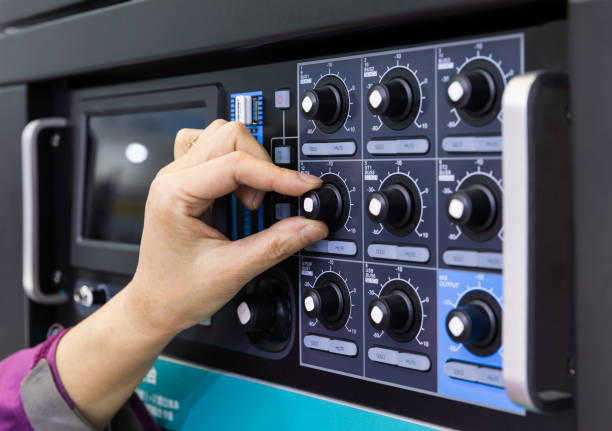Mastering Audio Calibration: How to Optimize Sound Settings for Your Home Cinema
Posted by Amplimart on June 16, 2023
Creating a captivating home cinema experience goes beyond having the right audio and video equipment. To truly immerse yourself in the world of movies, music, and gaming, it's crucial to optimize the sound settings of your home cinema. In this guide, we'll take you through the process of audio calibration, helping you extract the maximum performance from your audio system and enjoy a truly remarkable audio experience.
Understanding Audio Calibration

Audio calibration is the process of fine-tuning your audio system to achieve optimal sound quality in your specific environment. It involves adjusting various audio settings, such as speaker placement, distance, levels, equalization, and room acoustics. Proper audio calibration ensures that sound is balanced, detailed, and accurately reproduced, enhancing your overall listening experience.
Essential Steps for Audio Calibration
- Speaker Placement: Begin by placing your speakers strategically in the room. Position the front speakers equidistant from your main listening area and angle them slightly towards the audience for optimal stereo imaging.
- Subwoofer Placement: Experiment with subwoofer placement to find the spot where it produces the most balanced bass response. Corners or mid-wall positions are often ideal.
- Speaker Distance and Level: Use an audio calibration tool or an SPL meter to ensure consistent speaker distances and volume levels. This ensures that audio reaches your ears at the same time, providing a cohesive soundstage.
- Room Acoustics: Consider implementing sound-absorbing panels or diffusers to reduce unwanted echoes and reflections in your room. This helps in achieving a more accurate and natural sound reproduction.
- Equalization: Utilize room correction software or an equalizer to compensate for frequency response irregularities caused by your room's acoustics. This step helps to flatten the frequency response and deliver a more balanced sound.
The Importance of Audio Calibration

Audio calibration plays a pivotal role in optimizing your home cinema experience. Here are a few key reasons why it is important:
- Immersive Sound: Proper calibration ensures that every sound detail is accurately reproduced, creating a realistic and immersive audio environment.
- Balanced Audio: By fine-tuning your system, you can achieve a balanced audio response across different frequencies, preventing overpowering bass or shrill highs.
- Precise Localization: Calibrating speaker placement and distance helps to create a soundstage where individual sounds can be accurately localized, enhancing your movie-watching or gaming experience.
- Consistent Performance: Calibration provides consistency in audio performance, allowing you to enjoy the intended sound quality across different media and content.
Conclusion
Mastering audio calibration is a crucial step in optimizing your home cinema experience. By paying attention to speaker placement, distance, levels, room acoustics, and equalization, you can achieve exceptional audio performance that brings movies, music, and games to life. Invest some time in calibrating your audio system, and you'll be rewarded with a breathtaking audio experience that truly complements your high-quality video setup.
TL;DR (Too Long; Didn't Read)
Mastering audio calibration is crucial for optimizing your home cinema experience. Proper speaker placement, distance, levels, room acoustics, and equalization enhance sound quality, immersion, and localization. Invest time in calibrating your audio system for a breathtaking audio experience.

